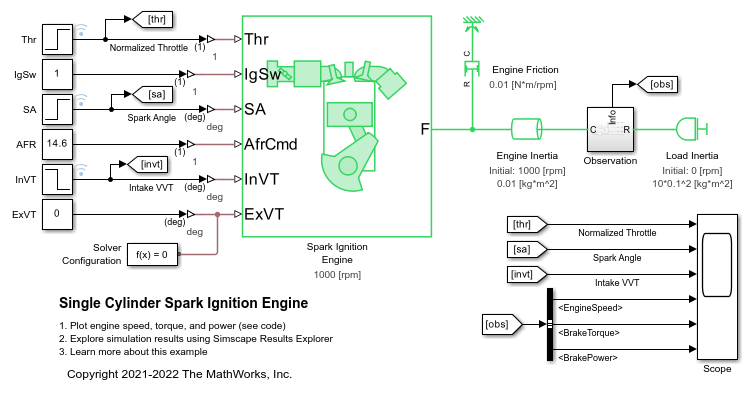Crankshaft
Libraries:
Simscape /
Driveline /
Engines & Motors /
Engine Subcomponents
Description
The Crankshaft block represents the crankshaft component of an abstracted internal combustion engine. Connect this block to one or more SI Combustion Cylinder blocks to compute the crank-angle-resolved instantaneous torque.
Equations
The generic torque-speed-power relationship governs the block, such that
where
τ is the torque.
ω is the rotational speed, which the block assumes is nonnegative.
P is the power.
The block calculates the power as
where N is the value of the Number of cylinders parameter. The block calculates ω as the time derivative of the crank position, θ, such that
The constant ωc is the Threshold to avoid divide-by-zero parameter. When ω < ωc, the block applies 1/ω linearization.
The block calculates the crank position with respect to the top dead center position for each combustion cylinder, where 0 ≤ θi ≤ 720 degrees. How the block performs this calculation depends on N. For all values of N, θ1 = θ. For N = 2, θ2 = θ1+Δ, where Δ is the Spark angle difference parameter. This parameter value is specific to the engine you want to model. It may be a value such as 270° or 360°. When N = 3, the block assumes that the cylinders are evenly phased such that
When N = 4, the block assumes that the cylinders are evenly phased at 180° and enables the Firing order parameter.

